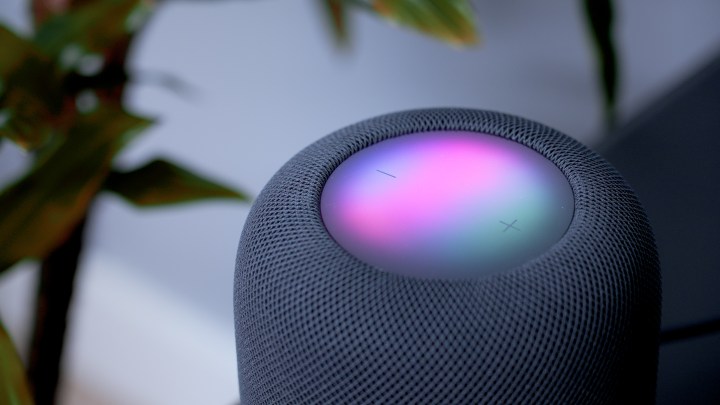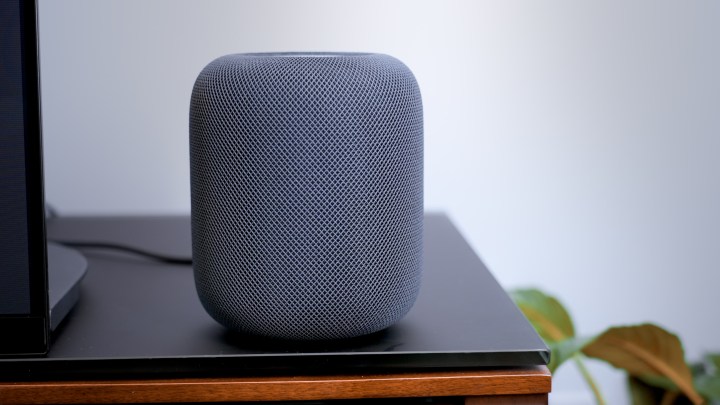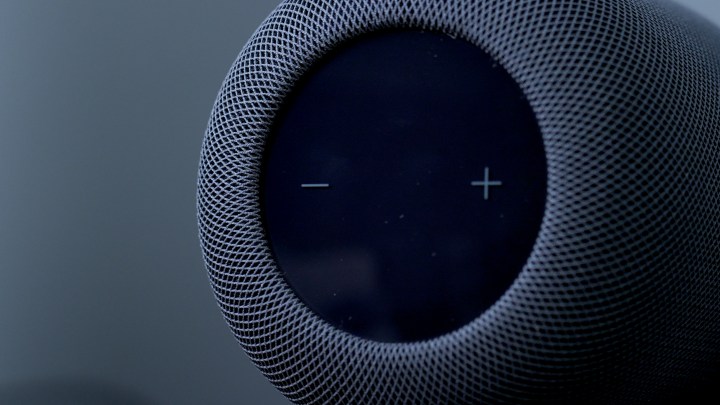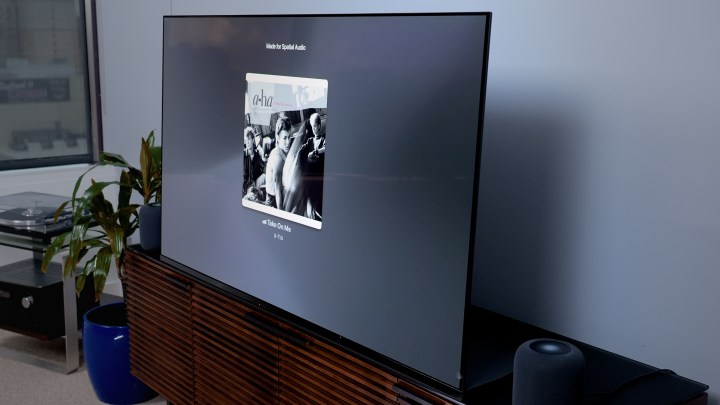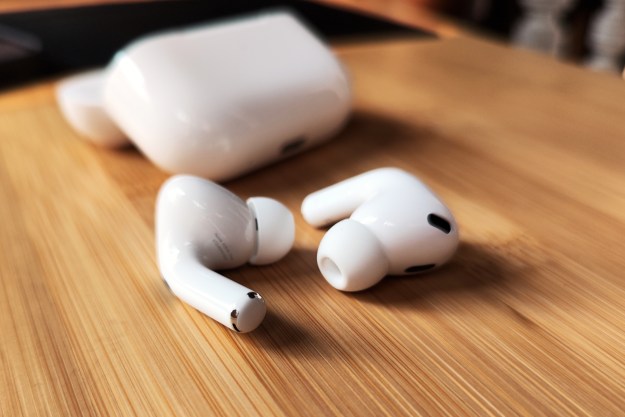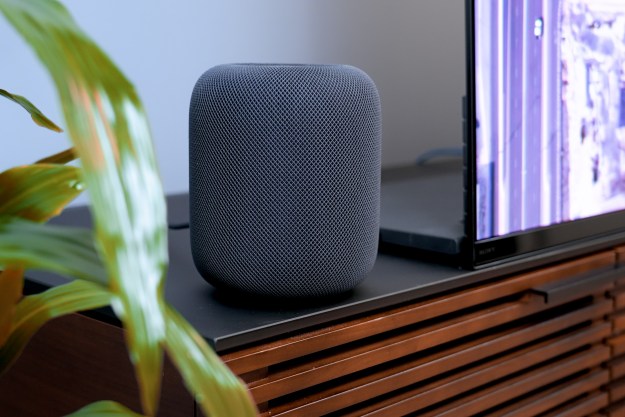
- Great sound quality
- Incredible bass performance
- Dazzling Spatial Audio surround
- Plug and Play wireless
- Slick design
- Limited connection options
- No direct Spotify playback
As I write this, the new Apple HomePod hasn’t even hit store shelves, and I’m already seeing a lot of snarky opinions about it. I get the skepticism: It’s an expensive smart speaker in a market flooded with more affordable options that are “good enough” for most folks. The original version was a hard sell, and it at least appears that this version might be, too. But what the premature punditry fails to consider is the powerhouse potential that could be unleashed when you pair two HomePods together.
In this review, I’ll cover what’s new in the second-generation HomePod for posterity. But instead of droning on about whether a standalone HomePod or even a house full of HomePods makes sense for most people, I want to talk about what I experienced when I paired two new HomePods together and mated them to an Apple TV
What’s new in Gen 2?
On paper, it may not appear there’s a whole lot new about the second-generation HomePod. But Apple made some key changes where it counts most.
First is the HomePod’s very existence — I say that because Apple discontinued the original. Why? We can only speculate. Some believe it’s because the original HomePod didn’t sell so well. If that’s indeed the case, then why bring it back? Again, we can only speculate, but I got the distinct impression from Apple that the company feels this version of the Home Pod is significantly better, and that the world is more ready for it now.
Was the original HomePod just ahead of its time? We’ll see.
The new Apple HomePod is about the same size and shape as the original — a surprisingly compact speaker, especially considering the sound you get from it.
This speaker is more capable of making itself sound good in just about any environment than the previous version.
Up top is a larger touch-sensitive graphical display that has colorful animations for Siri interactions, along with two very obvious plus and minus buttons for volume. The new Apple HomePod now comes in a Midnight color in addition to a white option.
Those are the only discernible visual differences, along with the $50 price drop. The rest of what’s new is inside. Let’s start with the most profound internal change: the inclusion of Apple’s S7 chip. That’s the same chip you’ll find in the Apple Watch Series 7. The chip is notable due to the “computational audio” work it does. It’s easy to dismiss that as a marketing term. But in practice, Apple’s computational audio has a significant effect on how the speaker sounds.
Inside the speaker is one large woofer and five beam-forming tweeters (down from seven tweeters in the original), along with four microphones (down from six in the original). But the key to the new HomePod’s performance isn’t in how many drivers and mics it has, but in how they are now used.
HomePod is capable of reading the room acoustically. It’s like the Marvel superhero Daredevil in that it can basically “see” the room acoustically. That means that if you put the HomePod in a corner, it will see the corner and adjust the bass output so it isn’t too boomy. It also knows when it is close to a boundary, like a wall, or perhaps jammed between books on a bookshelf, and can change the way it operates. If it’s jammed between stacks of books, it will focus the audio out into the room rather than into the books.
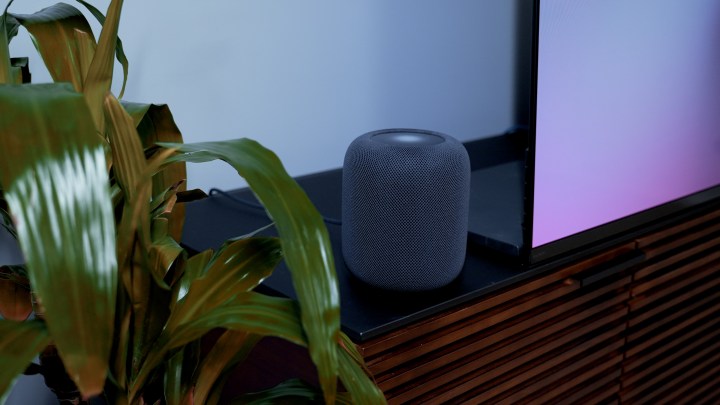
The new HomePod also uses the acoustical properties of its environment to maximize its
Also new inside is a temperature and humidity sensor, which can help trigger things like connected thermostats. While some question how handy this feature is, I can see its value for those who have room-based climate control systems rather than centralized climate control.
And that leads me to the next new thing integrated into the second-gen HomePod: a Thread radio. Previous HomePod and HomePod mini speakers are compatible with Matter — that’s the latest open smart device communication standard — but they don’t have Thread radios built-in. With a built-in Thread radio, users can create a closed network for their smart devices, eliminating the need to connect every device in the home directly to a Wi-Fi router or some other hub. Instead, users can just point all devices at the Thread network, and they’ll talk to each other directly. Also, any other device in the home with a Thread radio will work with the HomePod to create a mesh network, reducing the reliance on strong Wi-Fi signals in every corner of the home for good connectivity.
Finally, the HomePod will now listen for smoke detectors and other alarms, then alert owners when it hears them. Users can then employ the HomePod as an intercom to check on occupants, use a connected camera to check in and make sure the house isn’t burning down, or simply dispatch emergency responders to check the scene.
In the end though, as capable as it may be, the HomePod is a smart speaker, and at $300 it is an expensive one. Does it sound good? Yes, it does, and it always has, but that’s not enough in a world where most folks are clearly fine with having a bunch of smaller, less expensive smart speakers that sound “good enough.”
So from that perspective, I think the HomePod remains a tough sell in this market. As do all larger, bigger-sounding smart speakers from other companies, actually. That issue isn’t limited to the HomePod. I know the Google Home Max didn’t exactly fly off shelves, and I’m not seeing a gang of Amazon Echo Studios out there either. So, good luck to Apple breaking down that barrier.
However. Add a second HomePod? Well, now we’re talking.
It takes two
The return on investment you get out of buying two HomePods and operating them as a stereo pair is orders of magnitude better than just having one.
With two HomePods, we’re now talking about a $600 audio system that can sonically compete with any number of powered stereo speakers or soundbar packages that live in the same price bracket.
Folks, I was thrilled with the HomePods’ performance.
With a Sony A95K QD-OLED TV and a new Apple TV 4K, I set up a pair of second-gen HomePods, a pair of the SVS Prime Wireless Pro, and a Sonos Beam soundbar, then pit the three against each other. Now the SVS speakers cost quite a bit more than a pair of HomePods, on their own, but to unlock the full functionality I needed, adding the Apple TV
From the perspective of sound quality, cinematic experience, flexibility, and ease of use, the HomePods stood up very well against the excellent Prime Wireless Pro, and all but blew the
Let’s throw some caveats in so we all understand the playing field we’re working with: The SVS Prime Wireless Pro are an audiophile-grade pair of powered speakers with many more connection options than the HomePods allow, and can be expanded to include a subwoofer. Still, the Prime Wireless Pro aren’t smart speakers — they need a smart audio device to be connected for any voice control or smart home control to work.
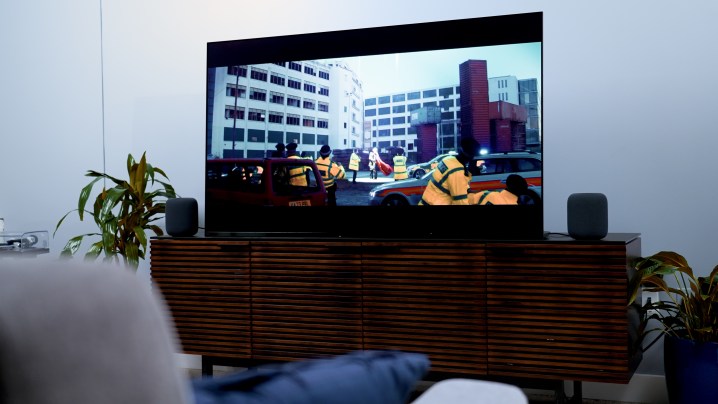
The
With that in mind: What was it like having the HomePods as my music system and my home theater system?
In many ways, It was pretty freaking awesome. I want to get into the fidelity — the sound quality characteristics of the speakers — in a moment. But before I do, folks, we’ve gotta talk about
Serious surround sound
I’ve enjoyed Apple’s
Sometimes the surround effect is more distracting to me than engrossing.
But a pair of Apple HomePods do an amazing job with
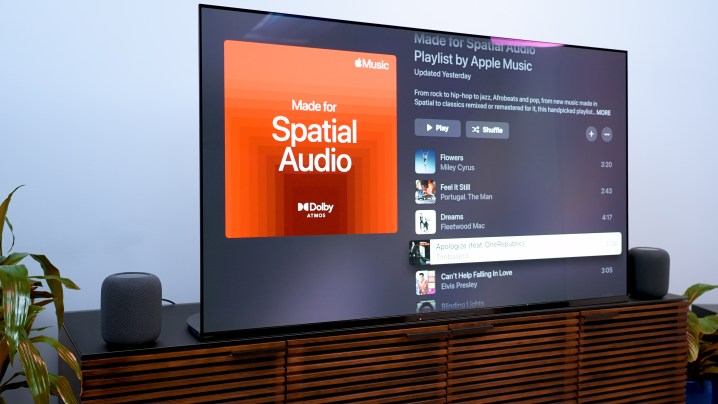
For
So, for movies and TV, I felt like the HomePods brought something really special and remarkable. They pulled off
Sound quality
So, to be clear, I wouldn’t classify a pair of HomePods as an “audiophile-grade” powered speaker setup. They offer too much of their own sonic character to ever be accused of sounding neutral or transparent. By comparison, the SVS Prime Wireless Pro are neutral, more revealing, and more honest with how they play back music, avoiding that overprocessed, DSP-muscled sound that so many powered speakers have.
I’m gobsmacked by how full-bodied, present, and punchy the HomePods sound.
The HomePods do have a touch of that DSP muscle going on. But dang it if Apple hasn’t figured out a way to make me like it. This pair of HomePods puts out a deep soundstage, with pinpoint imaging. It handles detailed transients with poise, delivering clean articulation and impressive high-frequency resonance. They never so much as flirt with the concept of harshness or sibilance, which is more than I can say for a lot of powered speakers I’ve auditioned.
The midrange is lush, full-bodied, and clear, if not just a bit forward in the mix, especially with vocals — which, according to Apple, is very much by design.
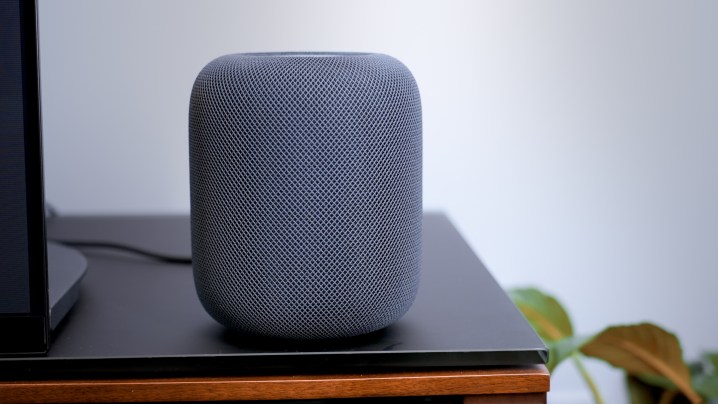
As for the bass? Well, that’s really the only area in which I have some mixed feelings. On the one hand, I’m gobsmacked by how full-bodied, present, and punchy the HomePods sound. With all of that sound from these two small speakers, it’s probably more impressive than I’ve heard from any other speakers of like size. But there’s also a sort of — well, its a sense that they are working for it. Like, they get the work done, but I can’t call the bass effortless. There’s definitely some DSP muscle involved. And at times, I felt like the bass was just … trying too hard?
Still, that’s the closeted audiophile in me. I think most people are just going to love the HomePods’ bass performance. If you like Beats
The bottom line
Would I put a pair of HomePods next to my TV in my living room and have it be my daily driver system for watching TV and listening to music? Yes, I would. I already own an Apple TV
When I want an audiophile music listening experience, I have a different room for that, but for day-to-day music listening, a pair of HomePods offers a deeply satisfying experience.
If I were deciding between a pair of HomePods and a comparably priced soundbar system, I’d take a pair of HomePods in a heartbeat. Now, let’s talks about the HomePods versus the SVS Prime Wireless or some other high-end powered speaker. Well, I think the tipping point would be the surround effects for movies and TV. If that was my priority, HomePods all day.
Frankly, I’m surprised I’ve reached this conclusion. I didn’t think the HomePods would fare this well. But they exceeded my expectations, and I say that having gone into this with some fairly lofty expectations in the first place.
Are they for everyone? Certainly not. I still think the HomePod is best for Apple fans. And I don’t know that buying just one HomePod makes a lot of sense for those wanting a smart speaker in their life.
But buy two? Now that’s a pretty magical experience.
Editor’s note: This review was initially published with an inaccurate score. The score has been adjusted to reflect the intended rating of the devices when operating as a pair in the context of a home entertainment/home theater use case.
Editors' Recommendations
- What is AirPlay 2? Apple’s wireless sharing system explained
- Apple has upgraded the AirPods Pro with lossless audio, sort of
- The Apple HomePod is back, with new smarts, and a lower price
- Apple AirPods Pro 2 vs. AirPods Pro: What’s new?
- Apple AirPods Pro 2 vs. Google Pixel Buds Pro


